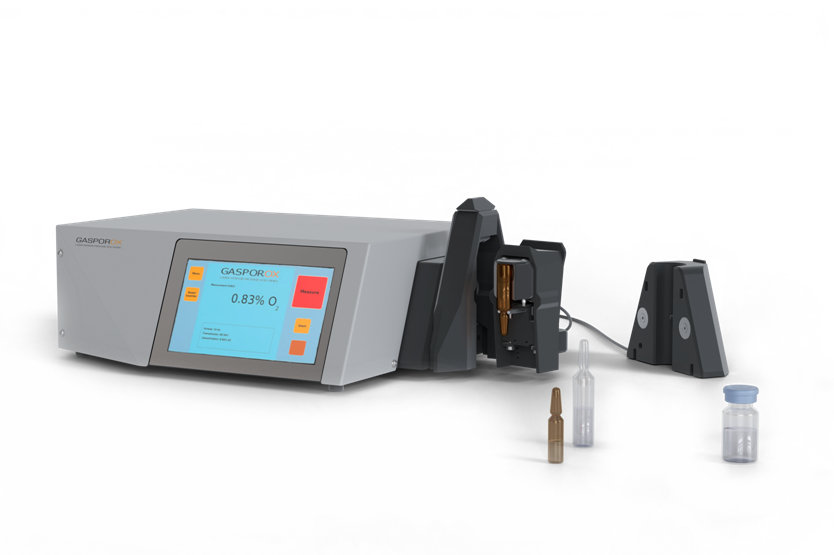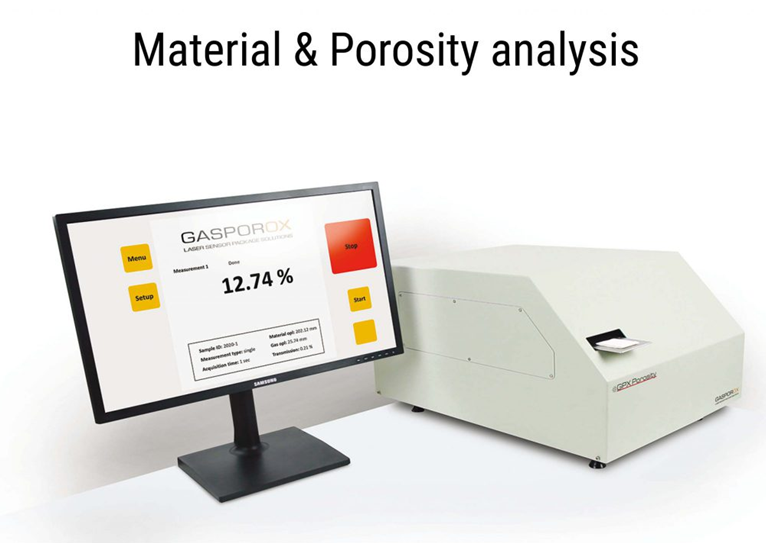By Gasporox AB
Gasporox NDT non-destructive testing methods
Gasporox AB’s proprietary technologies represents a new approach to quality non-destructive and non-intrusive inspection of packages. These technologies leverage the power of optical spectroscopy using low-power diode lasers to enable a range of non-destructive testing (NDT) solutions for various industries, including pharmaceuticals and healthcare.
Advantages of Non Destructive Testing
The most basic form of non-destructive inspection is a careful visual check, looking for outward signs of damage or leaking. More scientific NDT inspection has been an option from the late 19th century, initially based on the X-ray machines invented by German physicist Wilhelm Conrad Rontgen. Today, this is known as radiographic testing (RT). However, there is a difference between NDT inspection and NDT testing, since only the latter can produce quantifiable results.
The essential non-destructive testing definition is as ‘a means of testing a component without causing any detriment to it’. To accomplish this requires a combination of specialized technology and expertise to enable testers to ‘see inside’ a sealed package without actually having to open or break it. This is the essential difference between destructive and non-destructive testing.
Being able to use non-destructive testing techniques delivers a series of valuable benefits. These include:
- Ensuring product quality and safety: pharmaceutical products in particular rely on package integrity and sealing to guarantee they remain sterile and uncontaminated.
- Quantifiability and repeatability: NDT testing methods based on technology can deliver actual measurements, also known as ‘deterministic’ testing.
- Reliability: Non-destructive testing methods that are deterministic are inherently more stable and provide greater assurance than probabilistic methods, offering greater peace of mind to staff and consumers who come into contact with the product.
- Brand protection: the most important advantage of all is to ensure the integrity of products, prevent potentially disastrous regulatory breaches and thereby protect brand value.
Deterministic testing
Gasporox solutions align very closely with the principles laid out in USP 1207, which provides an overview of comparing destructive test and non-destructive test methods and categorizes them as being probabilistic testing (basically subject a batch of containers to stresses and record failure rates) or deterministic (test each container individually and confirm it passes). Previous techniques and types of non-destructive testing have included HVLD and tracer container gas analysis, along with vacuum or pressure decay.
USP 1207 states a preference for deterministic tests as being non-invasive and non-destructive, producing repeatable and predictable results and wholly suited to testing. Furthermore, it produces individal data that are applicable to test/trace and serialisation environment, in contrast to the statistical quality control approach used in probabilistic methods.
Non-destructive Testing challenges
Effective NDT methods need to overcome a series of challenges. These can include:
- Need to clean components or packages prior to inspection
- Sensitivity of inspection affected by package materials or surface finish
- Ensuring consistency between different package format and volumes
- NDT techniques that are affected by porosity, variations in magnetic permeability or conductivity
Gasporox approach to non-destructive testing
Beaming laser light through a package can characterize internal gas composition, for example in headspace of a package or inside porous materials, without affecting contents.
Gasporox laser sensors are based on Tunable Diode Laser Absorption Spectroscopy (TDLAS) that enables precise measurement of the concentration of elements in gaseous mixtures. Gasporox sensors can thus measure concentrations of gases such as oxygen (O2), carbon dioxide (CO2) or water vapor (H2O). inside the headspace of packages. This non-destructive testing technique ensures the gas mix in the packages is correct for quality, safety and prolonged shelf life. The packages can be any type of bag, bottle, vial or tray for the food or pharmaceutical industry, whether transparent or non-transparent and made of materials such as plastic, glass, foil, carton or paper.
The unique ability of TDLAS ability to achieve very low detection limits down to 0.01% rel. gas concentration in the full range from 0% to 100% gives it a distinct advantage over other non-intrusive testing techniques. Apart from measuring gas concentrations, it also enables determination of gas pressure, again without having to use destructive testing techniques, as a way to test for container closure integrity (CCIT) and leakage.
Gasporox s GasSpect and CellSpect sensors can be integrated as components into production lines. TDLAS technology also forms the basis of Gasporox GPX Series stand-alone inspection platforms.
GPX1500 Film Pharma and GPX1500 Vial (now with Format Extension) provide platforms for fast and precise laboratory non-destructive headspace O2 gas inspection of a very wide range of pharmaceutical industry packaging formats, including plastic bags, vials and ampoules.
Gasporox GPX1500 and GPX Porosity instruments for benchtop or inline QC testing can be used in a range of non-intrusive testing applications:
- Package integrity testing: Headspace gas analysis (HGA) of packages ensures a sterile environment crucial for quality and safety in any type of bag, bottle, vial or tray for the pharmaceutical industry, whether transparent or non-transparent and made of materials such as plastic, glass, foil or carton.
- Package leak detection: Gasporox laser sensors can determine whether a package is leaking or not, even detecting the most minute leaks in packages that include any type of bag, bottle, can, tray or vial for the pharmaceutical or food industry. The packages can be made of virtually any material, including metallic containers.
- Porosity Analysis of Pharmaceuticals: Material porosity is a relevant parameter in many production process with dry compounds. For example, pharmaceutical production of tablets uses porosity measurement as a relevant GMP quality assurance attribute. Gasporox technology offers an alternative to destructive testing methods that require additional laboratory steps like sample weighing, have long measurement times, are material dependent, or subject to limited accuracy. By using its innovative approach with GASMAS technology in Gasporox sensors, it allows measurement of the optical porosity of pharmaceutical substrates such as ribbons produced by a roller compactor in the process of the tablet production in a non-destructive process that is fast, accurate and easy to use.
Resources
Click on The Gasporox Solution for further information.



















